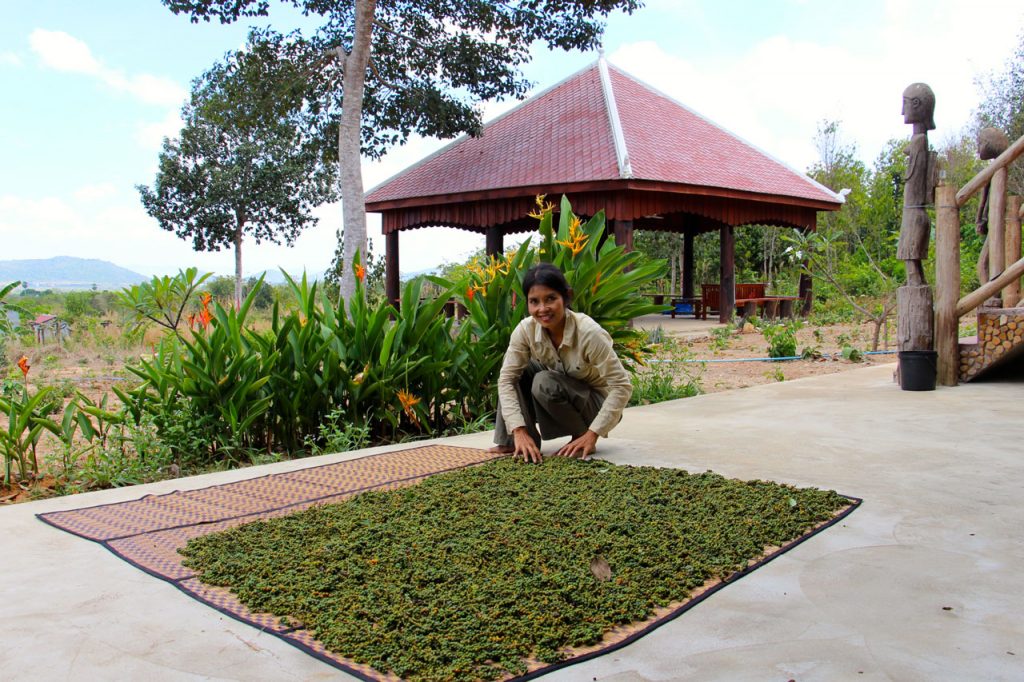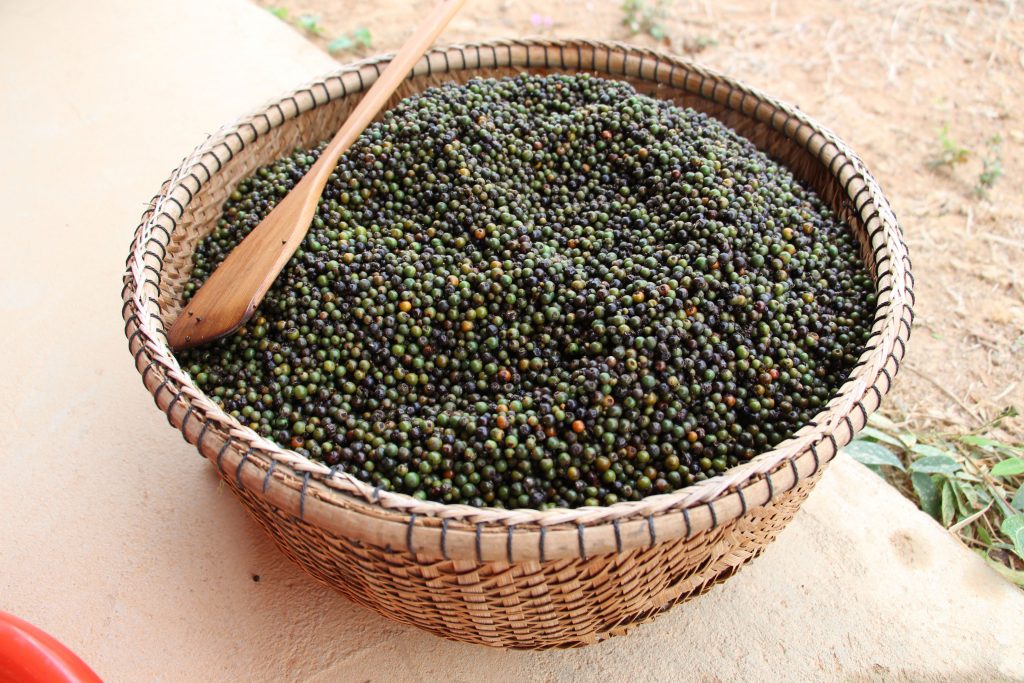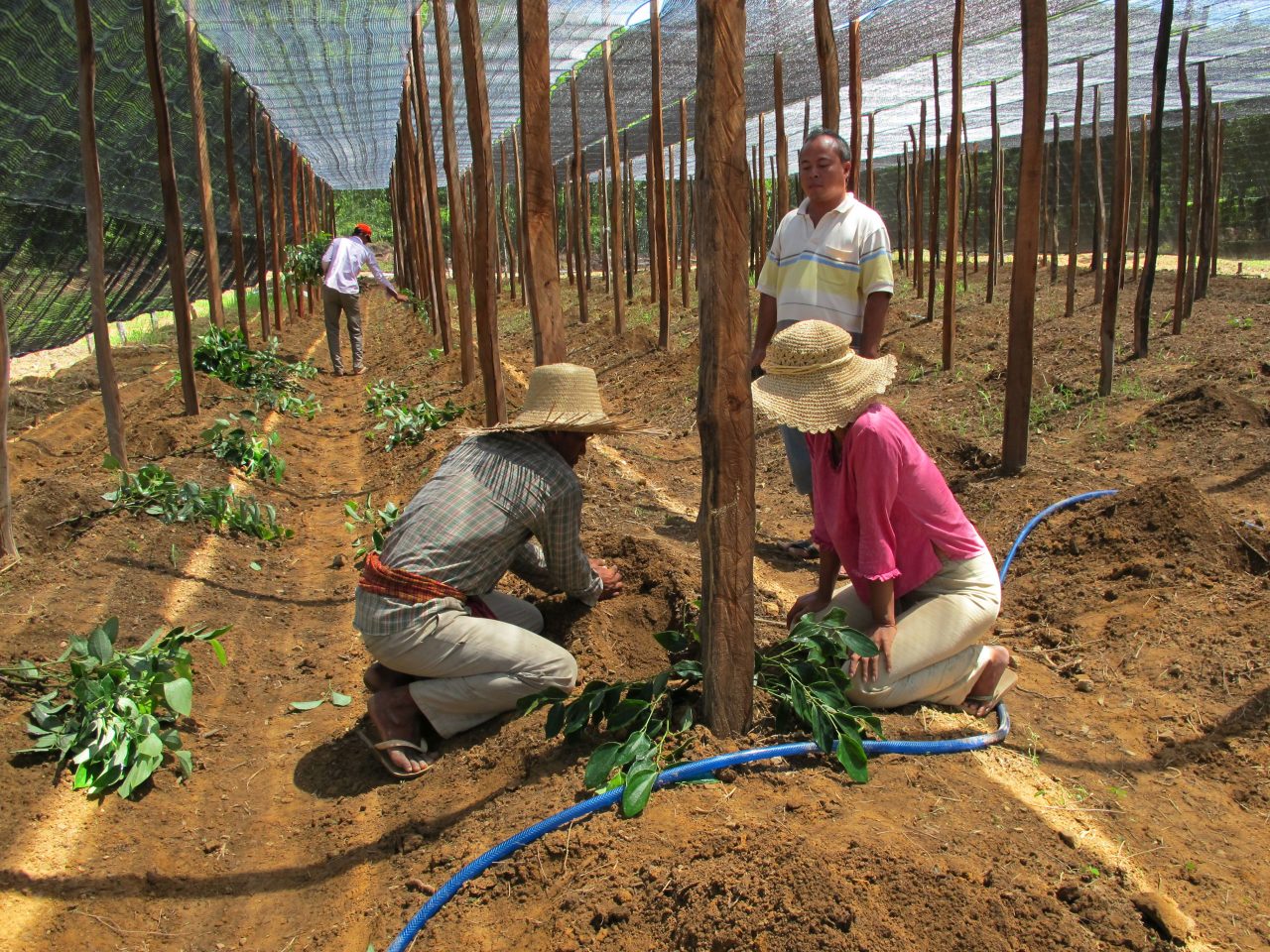Pepper cultivation
The three first years…
One first needs to prepare the soil by a number of ploughings, carefully unearth all kinds of old roots then make furrows, the top part of which will shaped every two meters into 50cm quadrangles to receive four meters high wooden poles.
The pepper plant is actually a vine, which will climb all the way to the top of the pole. Three young plants are planted at the foot of each and every pole with an amount of natural fertilizer mixed with soil (cow, bat and even elephant manure, in the particular case of Chamkar Damnak) and then generously watered every day.
The initial part requires a lot of efforts and care. One needs to bring water every day and make sure the sun doesn’t desiccate the young vines.
The whole plot needs to be protected from the sun on the sides as well as on the top by coconut tree leaves or more easily by horticulture nets. Watering is done manually thanks to the beneficial spring that spurts on our land.
During the two to three first years it is forbidden to harvest anything, one cuts flowers and extremities of the vine to make sure pepper doesn’t wear out by producing peppercorns and boost its growth.
After three years each vine has generally covered its pole, a height of three meters, thus allowing a first harvest.
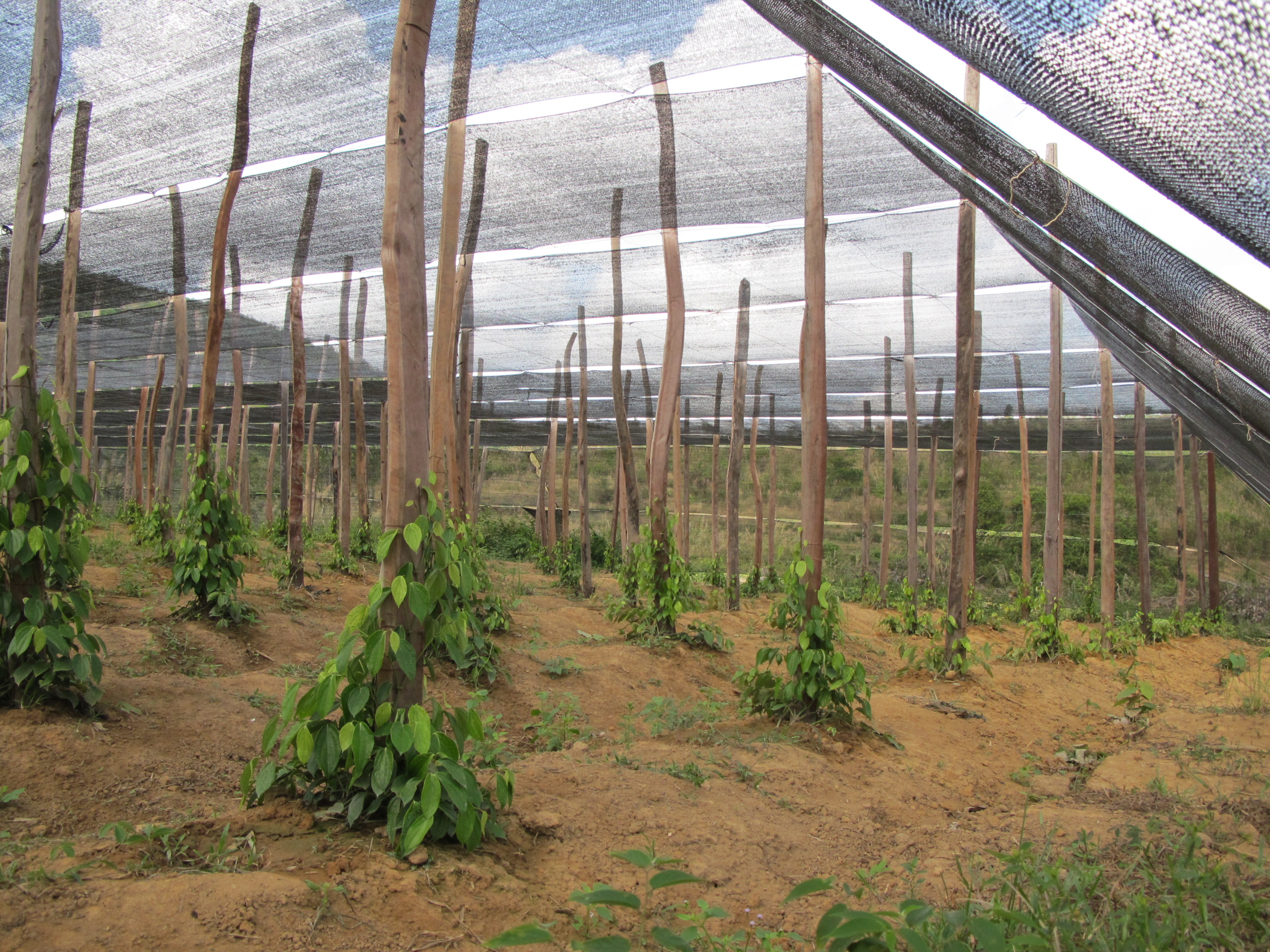


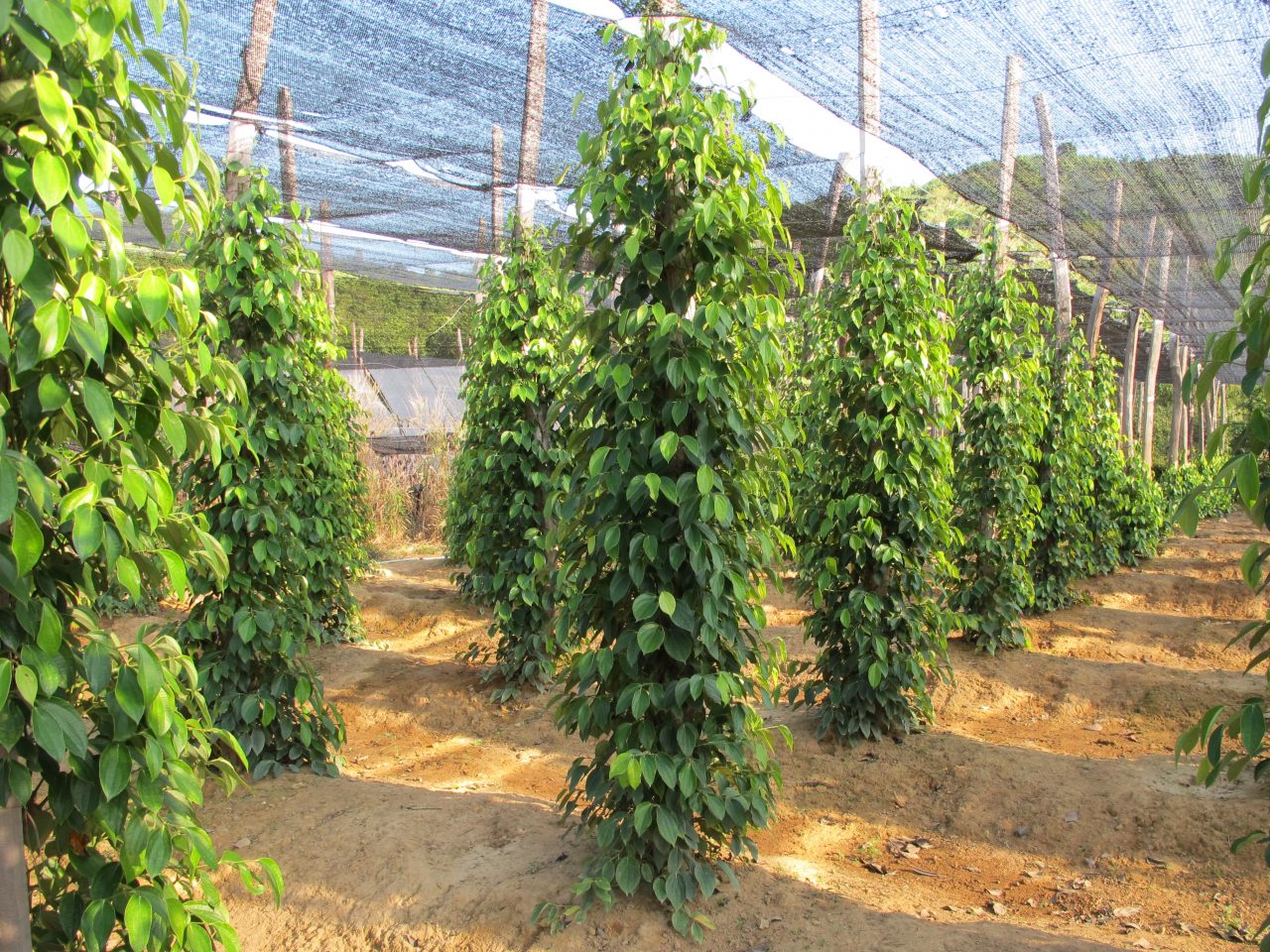
The harvest
Harvest is done once a year on pepper vines from three to years old and more. It starts in February and ends in May, according to the season.
Harvesting starts early morning at the coolest hour of the day. Plantation workers gather pepper clusters with the help of stepladders and place them in wicker baskets at their feet.
This job is not over in one day, workers will be back. As a matter of fact the size of the peppercorns is unequal, there will be a second passing to give time to the less mature corns to ripen up.
Once the baskets are full they are brought to the farm to be sorted out, it’s the beginning of a long and fastidious work where green and red peppercorns will be separated and the damaged ones thrown away.

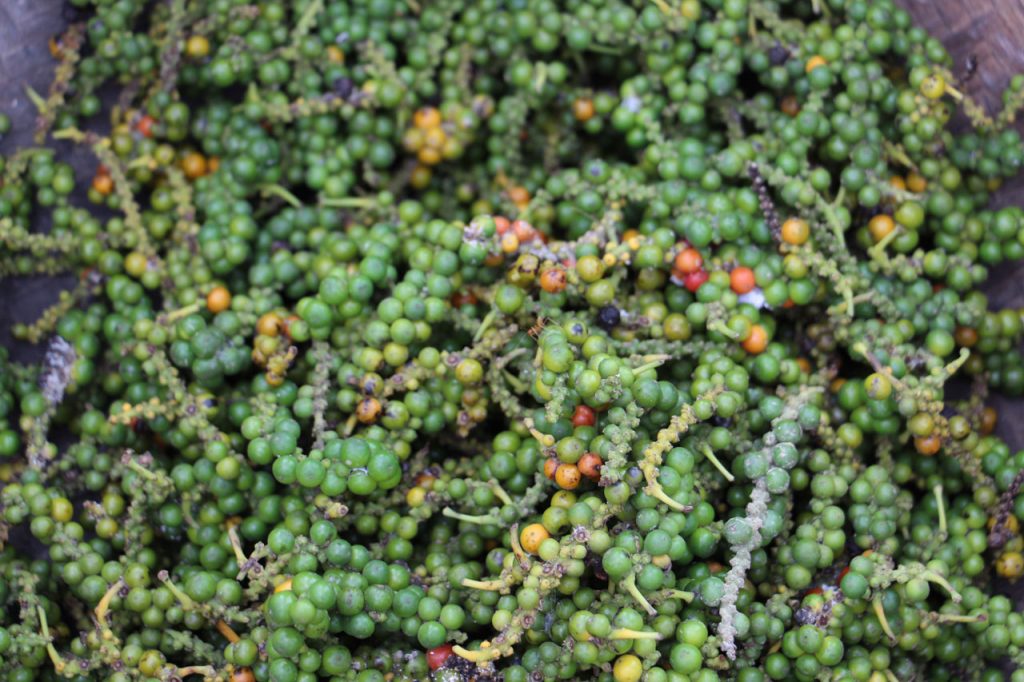


Drying
Once sorted out, peppercorns are spread out in the sun on mats for a drying phase that will last from three to five days according to the sun and the heat of the moment.
Regularly turned around they will start acquiring a typical black colour, enhanced by a short three minutes dip into boiling water.
The whole production will be then be entirely calibrated by hand for many days to come.

